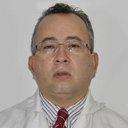Antimicrobial activity of fractions and subfractions of Elaeagia utilis against microorganisms of importance in dental caries.
Palavras-chave
Resumo
Dental caries is a multifactorial infectious disease that leads to the destruction of dental hard tissue. The main goal of research into medicinal plants is to seek compounds with antimicrobial activity for subsequent use in prevention strategies and control of infectious diseases. The aim of this study was to evaluate the antimicrobial activity of fractions and subfractions obtained from Elaeagia utilis against Streptococcus mutans, Streptococcus sobrinus and Lactobacillus acidophilus. The plant material was collected in the town of Alban (Cundinamarca, Colombia), which is located at an altitude of 2245 meters above sea level. Two extracts were obtained by cold maceration of E. utilis leaves in (a) petroleum ether extract and (b) ethanol extract. Fractions were obtained from the petroleum ether extract by column vacuum chromatography, and from the ethanol extract by continuous liquid/liquid partitioning. The antimicrobial activity of fractions and subfractions was evaluated by the well diffusion method. At a concentration of 10 mg/well, several fractions from both extracts showed antimicrobial activity against S. mutans, S. sobrinus and L. acidophilus. Among the ethanol extract fractions, the dichloromethane fraction had notably greater antimicrobial activity. It was sub-partitioned, yielding three subfractions with inhibitory activity, of which the most active was MeOH: H2O (Bp) with minimum inhibitory concentration 0.1 mg/well on the 3 study bacteria. Terpenes, sesquiterpenlactones and simple phenolic compounds were identified in it. In conclusion, this study shows the antimicrobial potential of fractions and subfractions obtained from extracts of E. utilis leaves against bacteria that are important in dental caries.


